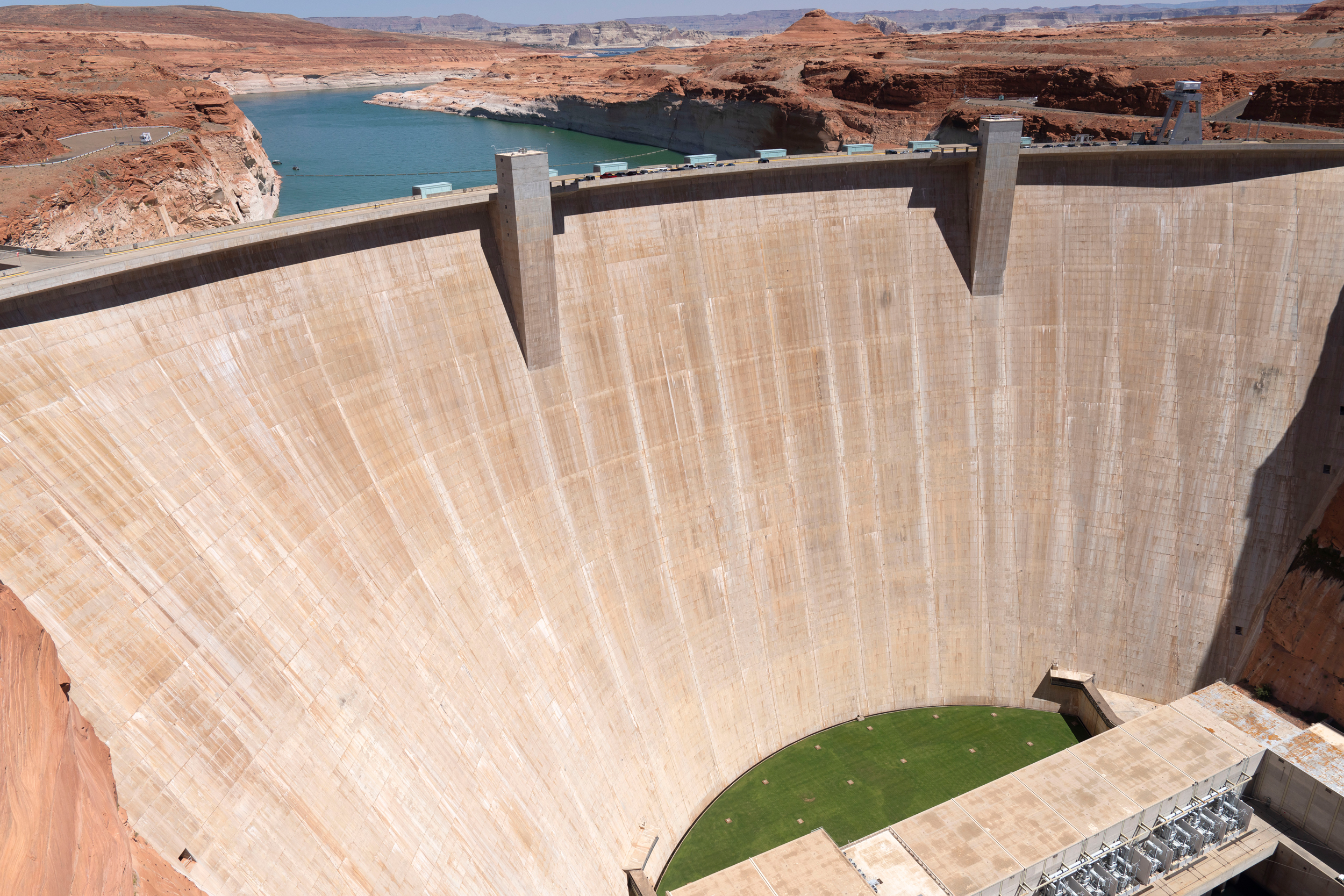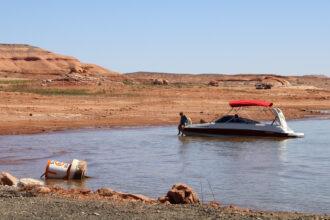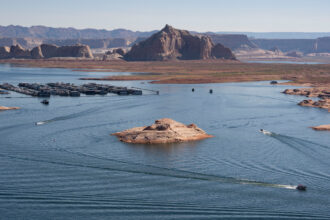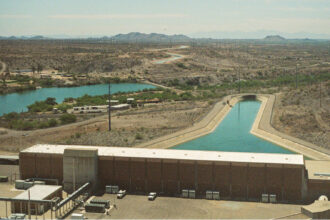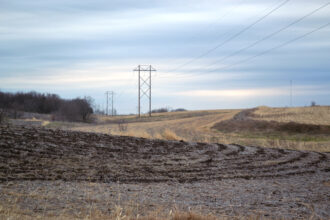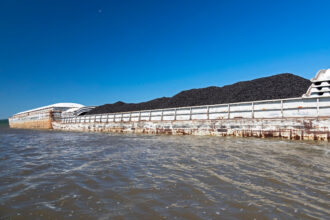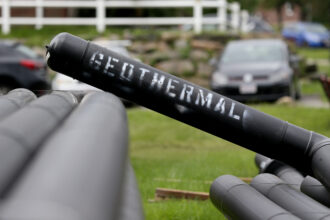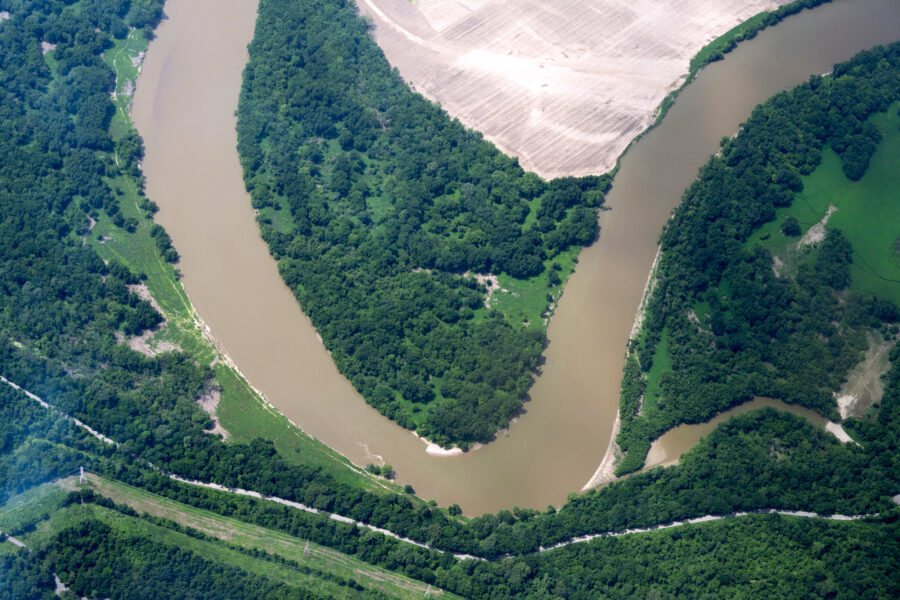There is no more water available.
That’s the assessment of a new report published Wednesday about the Colorado River by a coalition of environmental groups urging the states that rely on the river and the federal government to take immediate action to cut back use. The river, they argue, is threatened by crises in both its hydrology and in the transparency of the groups negotiating its future.
The report comes as the Colorado River verges on collapse. A recent study from leading experts found that by 2027, water levels will be so low in the system’s major reservoirs that their dams would become inoperable and nearly all storage would be lost, with water struggling to reach California, Arizona and Nevada.
After two years, the seven states that rely on the river are at an impasse in tense negotiations over the cuts in water allocations that each of them will accept in a new agreement being drafted to take effect when the current guidelines for managing the river’s water expire at the end of 2026. That process is supposed to be public, with the Bureau of Reclamation, the federal agency that oversees the river and its dams, publishing environmental impact statements that allow for public review and comment. But so far, those reports haven’t arrived and there’s no word on when they will. Complicating the process even more, Reclamation still does not have an appointed leader after the Trump administration’s nominee for the post withdrew last month.
But despite the blockages in the planning process for management of the river, the rash of crises coming for the millions of people who depend on it for drinking water, electricity and irrigation continues to rise and accelerate.
“What happens on the Colorado River doesn’t stay on the Colorado River,” said Kyle Roerink, executive director of the Great Basin Water Network, which led the report. “This is not a night on the Las Vegas Strip. This is a problem that will have ripple effects through many communities throughout the Southwest, whether they’re in the Colorado River watershed or not, and I think we could all have a better understanding of what the powers that be are thinking if there were a public and open process, but there’s not.”
The damming of the Colorado River has diverted water to booming metropolises like Los Angeles and Phoenix while also supporting the U.S.’s most productive agricultural areas and powering some of its largest hydroelectric dams. The river’s water flows from Wyoming to Mexico, supplying seven states, 30 tribes and 40 million people with water, with most of it supporting the region’s agriculture. But the river has long been overdrawn, and climate change is further cutting its water supply as decades of drought and warming lessen the mountain snowmelt that feeds the river in the spring, reducing its flow and dropping the levels of its reservoirs.
The report offers nine recommendations that are broadly focused on cutting use, stopping any more water from being diverted from the river and addressing infrastructure issues at Glen Canyon Dam that could hinder its ability to release water as the levels of Lake Powell, the reservoir behind the dam, drop.
For management purposes, the Colorado River Basin is split into two parts. Wyoming, Colorado, Utah and New Mexico make up the Upper Basin, and Arizona, California and Nevada make up the Lower Basin. When the river’s water was divvied up between the states in what’s known as the Colorado River Compact in 1922, Reclamation estimated there was around 18 million acre feet (MAF) of water in the river (one acre foot is roughly 326,000 gallons), and the basins were allowed to take 7.5 MAF each. But in the 21st century, flows have averaged around 12.5 MAF a year, with studies predicting that will dwindle further and the most recent water year seeing just 8.5 MAF.
That adds up to allocations of a third more water than the river has carried on average this century.
This story is funded by readers like you.
Our nonprofit newsroom provides award-winning climate coverage free of charge and advertising. We rely on donations from readers like you to keep going. Please donate now to support our work.
Donate NowThe major sticking point between the negotiators from the two basins is who will take the necessary cuts. The Lower Basin, which has historically used the greatest amount of the river’s water, with the nation’s two largest reservoirs constructed by Reclamation to help them manage it, has argued all states should work together to cut back usage. But the Upper Basin states, which have never used their full share of the river and have little infrastructure to divert and store water, have argued that the lower basin must take most of the cuts. They have proposed 30 projects that would divert over 1 MAF from the river, the report finds, to hang on to as much of the Upper Basin’s previous allocation as possible. But those projects must be prohibited, the report says in its first recommendation.
“Those are fighting words or litigating words,” said Gary Wockner, founder of Save the Colorado and Save the World’s Rivers, which has fought proposed dams in the basin. “I mean, for crying out loud, you’re basically threatening the water supply for 30 million people and all the businesses and agriculture by saying you’re refusing to sign something to send water downstream. We think the Upper Basin needs to take cuts.”
The environmental groups argue that all the states in both basins need to have plans to cut back on water usage from the river.
An Asset Turned Liability
Operations must change at Glen Canyon Dam, too, the report argues. The dam stores water at Lake Powell and provides electricity to 5 million people. But overuse and drought has left the reservoir only about a quarter full. If the water level continues to drop, it will fall below “minimum power pool” and the dam will lose the ability to generate hydropower. Dam managers previously believed that, even after the level dropped too low to spin the hydroelectric turbines, water could still be sent downstream using an outlet located lower in the dam. But studies from Reclamation have found that those pipes can not sustain long-term use without damaging the dam.
“Glen Canyon Dam is becoming a liability to the entire system,” said Eric Balken, executive director of the Glen Canyon Institute. “When it was built originally, in a time of excess water, it was seen as an asset. But what we’ve learned, really in the past few years especially, is that this dam is becoming a huge roadblock to water deliveries and posing a huge risk to users in the Lower Basin.”
“To my mind, the Colorado River compact has been a dead letter for a decade or more and we really don’t follow it anymore,” he said.
— Mark Squillace, University of Colorado, Boulder
Mark Squillace, a natural resources law professor at the University of Colorado, Boulder, who has written his own report on how the Colorado River should be managed going forward, said he agrees with the environmentalists’ assessment on the big issues, though he differs on some of the finer details, such as how to cut back water use for other users to get tribes the water they are owed.
“We had a really bad agreement in 1922 that did not make a good decision about how best to allocate the water in the river,” he said. “Now we have to confront that in some way, and we probably need a whole new compact.”
But there is, he said, a lack of transparency and leadership that’s hindering progress.
“To my mind, the Colorado River compact has been a dead letter for a decade or more and we really don’t follow it anymore,” he said. “Neither basin is getting their full allocation there. The water just isn’t there.”
To Squillace, the solutions are largely simple. Studies have found that cutting alfalfa production by 25 percent could save almost 1 MAF. But no one wants to give up what they have or be the first to cut back if there isn’t a guarantee the other states will follow suit, he said. That is where leadership from the federal government could really help, he added.
“There is this tendency on the part of the states to point fingers at everybody else,” Squillace said. “‘It’s the Upper Basin’s fault, it’s the Lower Basin’s fault, it’s California’s fault, it’s Colorado’s fault—it’s everybody’s fault. We’re all in this together.”
Correction: This story was updated on January 15 to correct Mark Squillace’s quotes to refer to the “compact” rather than the “contract,” and to correct a misspelling of his name in one reference.
About This Story
Perhaps you noticed: This story, like all the news we publish, is free to read. That’s because Inside Climate News is a 501c3 nonprofit organization. We do not charge a subscription fee, lock our news behind a paywall, or clutter our website with ads. We make our news on climate and the environment freely available to you and anyone who wants it.
That’s not all. We also share our news for free with scores of other media organizations around the country. Many of them can’t afford to do environmental journalism of their own. We’ve built bureaus from coast to coast to report local stories, collaborate with local newsrooms and co-publish articles so that this vital work is shared as widely as possible.
Two of us launched ICN in 2007. Six years later we earned a Pulitzer Prize for National Reporting, and now we run the oldest and largest dedicated climate newsroom in the nation. We tell the story in all its complexity. We hold polluters accountable. We expose environmental injustice. We debunk misinformation. We scrutinize solutions and inspire action.
Donations from readers like you fund every aspect of what we do. If you don’t already, will you support our ongoing work, our reporting on the biggest crisis facing our planet, and help us reach even more readers in more places?
Please take a moment to make a tax-deductible donation. Every one of them makes a difference.
Thank you,


